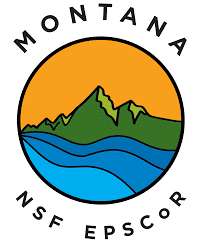Sensing for Science: Exploring the World of Arduino and Sensors In the Classroom

Introduction to Arduino and sensors
Welcome to the Sensing for Science Professional Development Program for Teachers. We will be exploring how to use Arduino and create an electrical device that will help us collect data on water quality. This simulates the research being done by Montana scientists and engineers who are part of the National Science Foundation-supported CREWS project (Consortium for Research on Environmental Water Systems).
Read our blog entry about how teachers are using this program
Join our Sensing for Science teacher cohort!
All resources on this page are free for educators to use and download. If you are a Montana teacher interested in bringing this program to your classroom, you can get an Arduino kit to use while you learn. Then, if you complete Level 1 of the program and share some information about how you will use the materials, we will send you a Sensing for Science classroom kit to use with your students.
Please apply through our Join Us page and email madison.boone@montana.edu if you have any questions. Although the instructional materials will remain indefinitely, the program with free supplies ends Sept. 30, 2023.
Other Sensing for Science resources
- Smoke Detector Science - from spectrUM Discovery Area. Learn what sensors are in a smoke detector?
- The American Computer and Robotics Museum in Bozeman featured an exhibit on sensors and remote sensing. The exhibit has now closed, but you can learn more here.
Coming soon
- Elementary-level activities on sensors (for out-of-school settings)
- Bringing authentic datasets into your classroom
Sign up for the monthly Brainstorms! newsletter to be notified when materials are ready
Getting started with Arduino coding and sensors
To get started check out the Getting Started video, and download the free Instructor's Guide here
Level 1 - Arduino and Electronic Basics
- Level 1 - Video
- Student Worksheets
- Teacher Verision (coming soon)
Level 2 - Sensors: Inputs and Outputs
- Level 2 - Video
- Student Worksheets
- Teacher Verision (coming soon)
Level 3 - Displays
- Level 3 - Video
- Student Worksheets
- Teacher Verision (coming soon)
Level 4 - Data Loggers
- Level 4 - Video
- Student Worksheets
- Teacher Verision (coming soon)
Level 5 - GPS Modules
- Level 5 - Video
- Student Worksheets
- Teacher Verision (coming soon)
Level 6 - Water Quality Project
- Level 6 - Video
- Student Worksheets
- Teacher Verision (coming soon)
- DFRobot TDS library
- Arduino Code
For more information about this program, please contact instructor Kayce Williams at kayce.williams@montana.edu or Science Math Resource Director Suzi Taylor at taylor@montana.edu
This material is based upon work supported in part by the National Science Foundation EPSCoR Cooperative Agreement OIA-1757351. Any opinions, findings, and conclusions or recommendations expressed in this material are those of the author(s) and do not necessarily reflect the views of the National Science Foundation.
